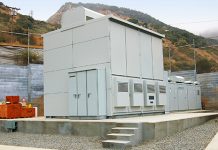*with humble apologies to Charles Darwin
John Petersen
The Oxford Dictionary defines the adjective ‘specious’ as:
- Superficially plausible, but actually wrong;
- Misleading in appearance, especially misleadingly attractive.
The Wiktionary offers a broader definition as:
- Seemingly well-reasoned or factual, but actually fallacious or insincere; strongly held but false;
- Having an attractive appearance intended to generate a favorable response; deceptively attractive.
Over the last two years I’ve patiently analyzed the evolving price and performance forecasts of electric vehicle advocates and lithium-ion battery developers. In the process I’ve shown them to be possible, but unlikely, and interdependent to the point where a single flawed assumption can level the entire house of cards.
I’ve also puzzled over the broader question of why supposedly reasonable businessmen would encourage market expectations that are so aggressive that the probability of delays, cost overruns, performance shortfalls and other predictable failures approaches certainty. Everyone knows that the stock market reacts badly to disappointment, so I’ve never been able to figure out why companies would voluntarily set themselves up for that kind of pain.
I found my explanation last week. The lights went on when I downloaded a new DOE Report titled “Economic Impact of Recovery Act Advanced Vehicle Investments,” which just happened to coincide with groundbreaking ceremonies for Compact Power’s new plant in Holland, Michigan that will create one new job for every million dollars of capital investment. When I compared the conclusions of this seven-page DOE report with the exhaustive technical discussions in the 380-page Annual Progress Report on Energy Storage Research and Development the DOE released in January, the differences were breathtaking.
Who’d have dreamed an industry could make that much progress in only six months.
The answer fell into place when I noticed that (a) the DOE press release uses a hyperlink to the White House for people who want to read the full text of the Report, and (b) the Report is not even hosted on the DOE’s server. Since I’ve never encountered a situation where the government agency that generated a report left it out of their official record, the clear inference is that the Report is political theatre wrapped in a DOE cover.
Once you understand that The Origin of Specious is political rather than technical, everything else makes sense. Armed with barrels of taxpayer money, the political class has sought out battery developers who will adopt the party line and add technical credence to questionable ideological goals. Faced with a Hobson’s choice between needed funding and technical integrity, the developers make the rational business decision and take the money, confident that future apologies will be easier to spin than current failure. Sprinkle in a healthy dose of optimism from journalists who don’t bother checking facts and you have the perfect political story for the next five years.
American presidents are supposed to inspire with challenges like putting a man on the moon or tearing down the Berlin Wall. The great ones sometimes succeed. For lesser men, the grand visions of their day target the highest fruit on the lemon tree and bring us wars on poverty, drugs, terror, foreign countries and CO2 that inevitably fall short of the mark while leaving us no wiser, but a little poorer and a little less free.
We all know how well pre-election promises work out. While it gives me no end of comfort to hear presidential assurances that battery prices, healthcare costs and budget deficits will collapse over the next five years, I’m not quite ready to pay a premium price to invest in those outcomes.
At the close of business on Thursday, the electric vehicle complex including Tesla Motors (TSLA), A123 Systems (AONE), Ener1 (HEV) and Valence Technology (VLNC) had combined 12-month revenues of $258 million and sported a combined market capitalization of $3.4 billion, including $900 million in stockholders’ equity and $2.5 billion in blue sky premium.
In comparison, the lead-acid battery complex including Enersys (ENS), Exide Technologies (XIDE), C&D Technologies (CHP) and Axion Power International (AXPW.OB) had combined 12-month revenues of $4.6 billion and a combined market capitalization of $1.6 billion, including $1.2 billion in stockholders’ equity and $460 million in blue sky premium.
Something is out of kilter when the electric vehicle complex has 6% of the sales and 77% of the stockholders equity of the lead-acid battery complex, but trades at twice the price.
Within a couple weeks, all of these companies will report second quarter results. The electric vehicle complex is likely to report bigger than expected losses – again, and at least for Ener1 and Valence, weak financial condition. In comparison the lead-acid complex is likely to once again report better than expected revenues, margins and financial condition. At some point the market will accept the cruel reality that political promises cannot repeal the laws of economic gravity, we can’t waste scarce resources in an effort to conserve plentiful resources, and investments in vehicle electrification are bound to follow the tragic value trajectory blazed by fuel cells and corn ethanol, which have been favorites of the political class since I was a baby lawyer.
It’s your money, but at least you understand The Origin of Specious.
Disclosure: Author is a former director of Axion Power International (AXPW.OB) and holds a substantial long position in its common stock.









Why all the fuss over electric cars? I don’t get it. It can’t be about gas mileage. Heck, Toyota can’t give the Prius away. They shut down an assembly line and now in the Sunday paper there was an add with incentives and zero financing.
The local Toyota dealer has a long row of Prius’s with no one looking at them.
If there’s no demand for a $23,000 proven car then why in the world would anybody think there’s one for a $40,000 EV?